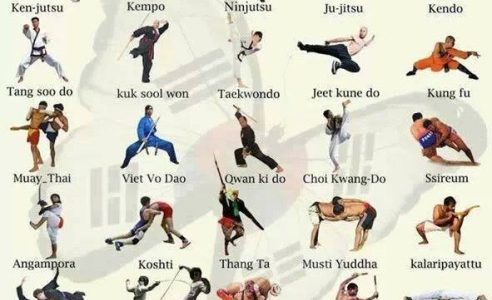The Worldwide Background And Change Of Martial Arts
The Worldwide Background And Change Of Martial Arts
Blog Article
Published By-Kaufman Workman
Martial arts have an interesting background that extends centuries and continents. You might discover it intriguing how old methods like Shuai Jiao and Kalaripayattu laid the groundwork for contemporary combat strategies. These techniques not just emphasize physical skills yet additionally reflect the cultures that birthed them. As you discover their evolution, take into consideration exactly how globalization has changed these typical types right into crossbreed styles. What impacts do you believe have formed today's martial arts landscape?
Ancient Martial arts: The Foundations of Fight
As you look into the world of ancient martial arts, you'll discover the rich structures that formed combat strategies across cultures. kid uses martial arts on bully focused on Self-Defense and survival, typically including strikes, grappling, and weapons.
In ancient China, as an example, strategies like Shuai Jiao stressed tosses and joint locks, while India's Kalaripayattu showcased agility and fluid movement. Japanese samurai established Kenjutsu, a refined swordsmanship that highlighted discipline and strategy.
These martial arts served not just for battle but additionally as a way of personal growth, instilling worths like regard and perseverance. The blending of these techniques in time laid the groundwork for the diverse martial arts you see today, each reflecting the distinct approaches and demands of its culture.
The Cultural Impact on Martial Arts Growth
While martial arts usually reflect the useful requirements of a society, they also embody the social values and ideas of their origins. When you discover various martial arts, you'll notice just how they're influenced by religious beliefs, ideology, and social norms.
For instance, the emphasis on respect and self-control in Japanese martial arts comes from Zen Buddhism and samurai society. On the other hand, Brazilian Jiu-Jitsu promotes adaptability and method, shaped by the demand for performance in a varied, modern environment.
martial arts kid beats up bully may locate that the routines, attires, and training approaches show a community's background and identity. By understanding these social influences, you strengthen your admiration of martial arts and their duty fit human experiences around the world.
Modern Adaptations and the Globalization of Martial arts
Martial arts have transformed substantially in recent years, adapting to modern society and global influences. You'll notice that traditional types have mixed with contemporary techniques, developing hybrid styles like mixed martial arts. These adjustments deal with varied audiences, making martial arts obtainable and enticing worldwide.
With the rise of social media sites and electronic platforms, you can locate tutorials and competitions from all edges of the globe, damaging geographical barriers. you could check here has actually brought about a common recognition for numerous self-controls, from Brazilian Jiu-Jitsu to Taekwondo.
As you engage with these arts, you'll understand they're not practically battle; they promote health and fitness, discipline, and psychological wellness.
Inevitably, contemporary adaptations have improved the martial arts landscape, making it a vibrant and developing practice.
Conclusion
In discovering the history and advancement of martial arts, you uncover a fascinating blend of methods, societies, and philosophies. From ancient self-controls like Shuai Jiao and Kalaripayattu to the modern-day adaptability seen in MMA, martial arts reflect humankind's pursuit for Self-Defense and personal development. As you involve with these practices, you not only acquire abilities but also a much deeper appreciation for the varied practices that form our world today. So, continue your journey and welcome the art of battle!
